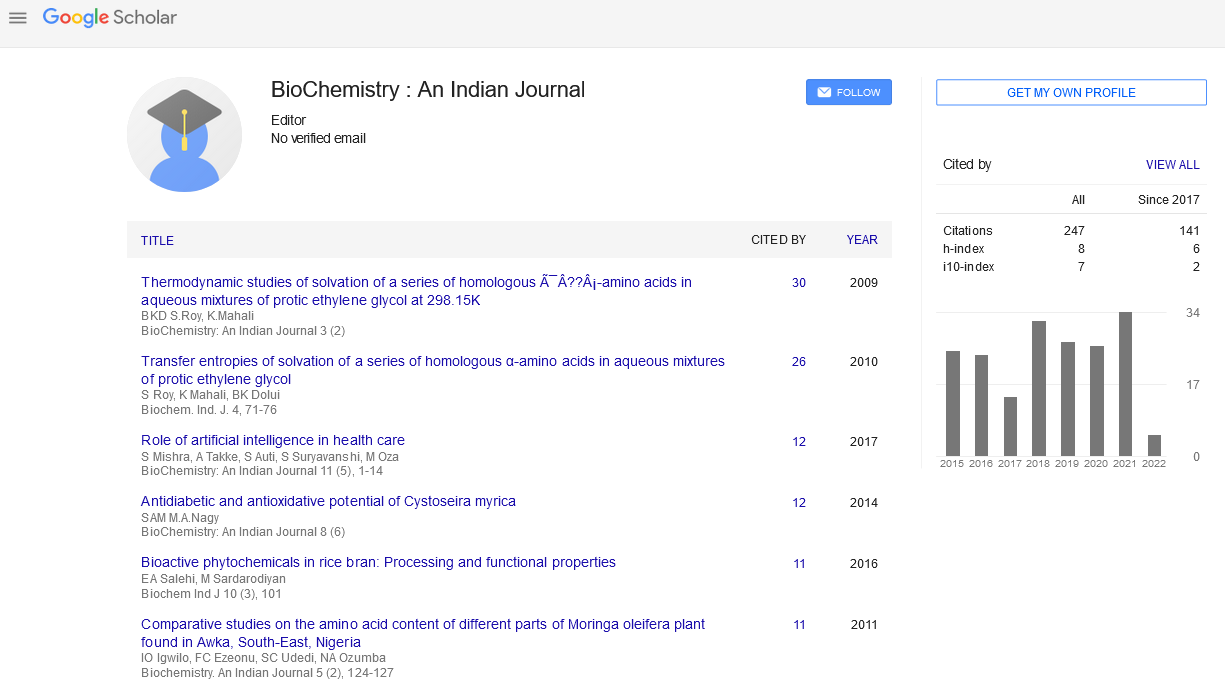Short communication
, Volume: 11( 6)Plant Proteomics
- *Correspondence:
- Gam Lay Harn, School of Pharmaceutical Sciences, University Sains Malaysia, Malaysia, Tel: 604-6577888; E-mail: mailto:layharn@usm.my
Received: November 20, 2017; Accepted: November 27, 2017; Published: November 30, 2017
Citation: Harn G. Plant Proteomics. Biochem Ind J. 2017;11(6):121
Abstract
Short Communication
Medicinal plants continue to possess good commercial values in the worldwide pharmaceutical industry. Not just across Asia, but even in the U.S. and Europe. Medical journals in the U.S. suggest there is positive acceptance of medicinal plants by medical doctors [1]. Review shows that over 100 medicinal preparations are on the European market [2,3]. Many comparative studies of medicinal plants treatment versus synthetic medication favor the former. For examples, garlic extracts lower total cholesterol levels in hypercholesterolemia patients and is safe for long-term or lifelong application [4]. Sample preparation in plant proteomics is the first the most crucial step to successfully deliver accurate protein identities. In plant proteomics, the proteins of interest must be extracted and allowed to go through separation and identification processes while kept stable throughout. Therefore, all sampling methods must be specific and consistent to reproduce results. The sample preparation of plant proteins remains to be the greatest challenge in studying of plant proteomics [5].
Sample preparation first involves acquisition, collection and storage of freshly harvest plants materials. Harvested plants material prior to being processed is kept in the optimum condition the different plants.
Prior to protein extractions, plant cell walls are lysed through physical disruption methods and enzymatic treatment. Physical disruptions, also called non-detergent techniques include mechanical blending using blenders, manual grinding with mortar and pestle, liquid homogenization, sonication and freeze/thaw mechanism. However, due to the multiple layers of cellulose of plant cells, causing the cell walls to be complex, strong and rigid thus very difficult to disrupt mechanically or chemically. As a result, the methods mentioned can be used singly, combined or optimized according to different plant cell types and depending on the aim of each study. A thick complex of polysaccharide and cellulose containing hemi cellulose and pectin, which forms the different texture of the plant cell wall composition, makes it difficult to disrupt the cell walls. Manual grinding coupling with freezing plant tissue with liquid nitrogen allow thorough disruption of plant cells. Freeze/thaw method is a repeating cycles of freezing cell suspension with dry ice and thawing at room temperature to disrupt cells through swelling and breaking as ice crystals [6].
Sample purification is often unavoidable in sample preparation. Plant cells are structured in organelles with different but inter-connected functions. Sample purification methods reduce sample complexity and allow protein analysis on purified cell organelles to produce reliable protein localization data. In the author laboratory, depending on the protein extract purity, a few cycle of phenol extraction coupled with ammonium acetate precipitation or trichloroacetic acid (TCA) precipitation of plant protein extract was carried out by considering the loss of protein from each additional cycle.
References
- Bent S, Ko R. Commonly used herbal medicines in the United States: A review. Am J Med. 2004;116(7):478-85.
- Craker LE, Gardner ZE. Medicinal plants and tomorrow's pharmacy. Medicinal and Aromatic Plants. Springer. 2006;29-41.
- Ernst E. Harmless Herbs? A review of the recent literature. Am J Med. 1998;104(2):170-78.
- Orekhov AN, Grunwald J. Effects of garlic on atherosclerosis. Nutrition. 1997;13(8):656-63.
- Wang W, Tai F, Chen S. Optimizing protein extraction from plant tissues for enhanced proteomics analysis. J Sep Sci. 2008;31(11):2032-39.
- Evans WH, Findlay JBC. Biological Membranes: A practical Approace. IRL Press. 1987;244(2):1-25.

